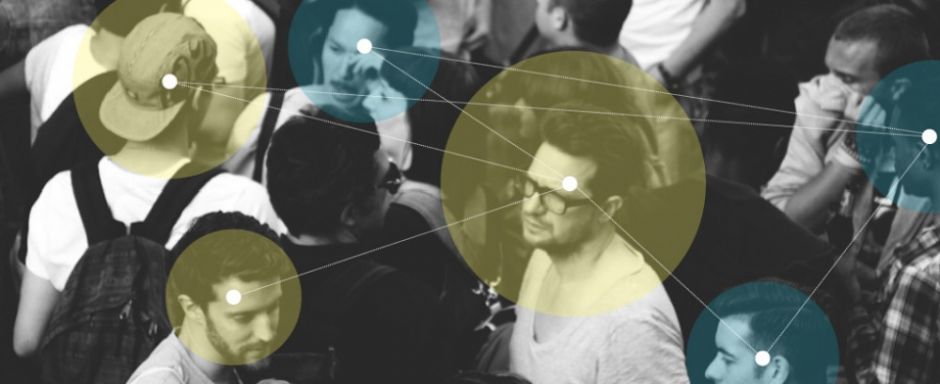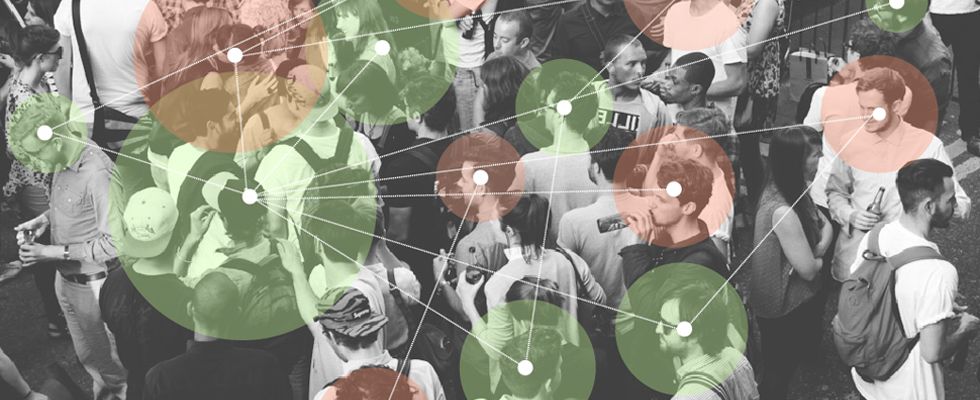The Art of Measuring Influence
Some people call them trailblazers, others call them tastemakers. Whatever name you give them, influential consumers are hot property.

A growing number of companies are using information about people’s social networking activity to record their influence online. Put your Twitter handle and Facebook name into a website such as PeerIndex or Klout, and you’ll get your rating. Justin Bieber has a PeerIndex of 89. Stephen Fry’s is 93.
But how exactly is this being calculated? ‘Influence at its lowest level is an outcome of trust that you have within a massive group,’ says Simon Cast, head of products at PeerIndex. ‘You’re looking at the reputation people have in order to work out their influence.’
It all works using complex mathematics. Companies such as PeerIndex take all the pieces of information about engagement within a person’s social networking circles and feed them into algorithms that work out their index score. Importantly, this isn’t just a popularity contest.
If you have a lot of friends and followers, you’re not necessarily influencing their behaviour and tastes. ‘Having followers is the popularity measure,’ says Cast. Instead, services such as PeerIndex take into account your importance in changing behaviour, as well as your reach and the quality of the content shared. If you get re-tweeted by someone, that’s worth something. If you get re-tweeted by someone with a high influence rating, that’s even better.
But it’s not just about getting a high rating. Different people will become influential about certain topics. Klout, for instance, deciphers conversations people have on Twitter to work out what topics they are experts on. If your tweets about lager and pubs get a good reception, then it’s likely you’ll be considered an expert about beer.

Importantly, this isn’t just a popularity contest. If you have a lot of friends and followers, you’re not necessarily influencing their behaviour and tastes. All this has got brands hot under the collar. For them, it’s a chance to get their products mentioned by people who others look to for information and opinions. It might sound like a long-shot for the brand, but evidence suggests people often make purchasing decisions based other people’s referrals.
According to McKinsey & Co, word-of-mouth is a factor behind between 20% and 50% of purchases – and influential people generate three times as many word-of-mouth messages as those who are non-influential.
The brands can reach these people through the websites of the influence metric companies. Klout has a section on its website called Perks. It’s a place where brands can offer free products to people, if those individuals have the right sort of influential expertise. If you’re considered an expert about make-up and have a high enough Klout score, you might be offered a new set of lipstick by a beauty brand to try out. Car brand Audi recently worked with Klout to identify influential people on Facebook, giving them a shortlist of people to target with new campaigns. In July, PeerIndex worked with British book publisher Penguin to help promote its title Gods Without Men by Hari Kunzru.
It identified people who are influential about literature, London and culture. These individuals were then sent review copies of the book in the hope they would talk about it on their social networks. ‘It’s a reward to having built that social capital,’ says Cast. ‘In return, Penguin gets reviews without having to go to literary journals.’There are, however, many limitations to all of this. For a start, spotting experts on Twitter isn’t easy.
Klout, for instance, assumes that if you talk a lot about a particular subject on Twitter, and receive numerous retweets and replies, then you’re more likely to be influential about it. You could be just mentioning that subject as a critic, or asking a lot of questions about it as a novice. Then there’s the problem of offline influence – how can this be taken into account in your influence scores?
‘Currently, Social Monitoring tools cannot take real world events and add them to someone’s influence score,’ says Nygel Weishar, a social media and community relations specialist at social media monitoring company Sysomos. ‘For example, Justin Bieber might be promoting a new brand of shoe. Even though he may not have tweeted about the shoe much, the real world happening of the endorsement deal would send his influence in the footwear industry right up the scale.’
Another problem is the idea of hierarchy, and how people with greater influence are filtering down their ideas to the masses below them. ‘You’ve got somebody of a higher status telling someone of a lower status that’s paying attention to that higher status person who then gives them a message,’ says Mark Earls, author of Herd: How To Change Mass Behaviour by Harnessing Our True Nature.
‘That’s not how social influence works. It does happen some of the time, but in the modern connected world, it’s less hard to find your experts.’ Earls puts this misunderstanding down to dated theory about how people communicate with each other within the Twitter-verse.
‘Social networking theory is based on broadcasting networks,’ says Earls, ‘with a central message that’s spread around. But it’s not like that. In reality it’s much messier. It’s not one or two interactions involving a recommendation. It’s several interactions with a number of people that add up to influence.’
Perhaps, then, social media metric companies ought to consider real world behaviour first. But for now, these services are translating these retweets and replies into index scores, and inviting brands to offer free products to those deemed more influential. You’d better get tweeting.


